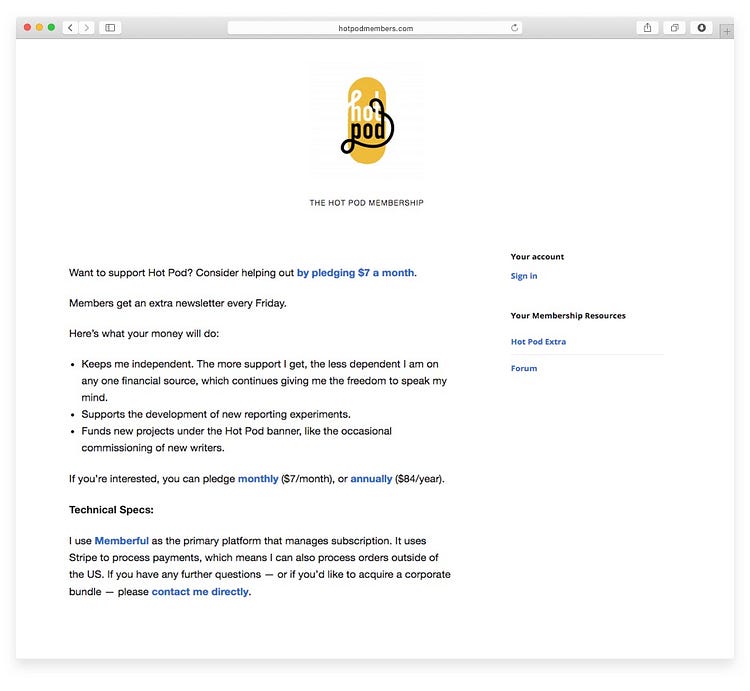|
Getting your Trinity Audio player ready...
|
Newsletters are seeing a renaissance, particularly as algorithmic timelines have become saturated with click-bait, advertising, and irrelevant information. Because of this, newsletters are increasingly the best way to reach people where they are, and you can almost guarantee they’ll read it.
There are many writers of varying backgrounds and interests monetizing their content for the first time using paid newsletters, and as the news industry changes faster than ever before it’s clear they offer an alternative to ad-supported business models.
Paid newsletters are a fantastic way to build a closer relationship with your readers than ever before, so we wanted to create a guide to the paid newsletters we love, a look at the state of the industry, as well as offer advice on how to go about building your own.
The idea of a paid email might seem strange, or even old-school, but it’s a fantastic medium for a subscription model. Email gets right in front of people, where they are already spending hours of their your day and doesn’t need to compete for attention in a social news feed.
Because paid newsletters change the equation from a focus on metrics like page views to rewarding creators for quality writing with money, it makes creating ad-free content much more sustainable and incentives different behaviors from those that create.
Think of paid email newsletters like a subscription to a newspaper; you love it when it shows up, and you’ll happily pay for the best of the day’s news to come to you. It’s about convenience, and getting out of the click-driven writing model.
Who’s doing it
With the success of a good number of indie newsletters and paid models, it’s worth looking at the newsletters out there monetizing already.
Stratechery

Ben Thompson’s Stratechery newsletter is delivered three times a week and costs $10 per month to subscribe, or $100 a year.
Ben has sent more than 1,000 newsletters already, and is one of the most trusted sources for insiders in the technology industry, particularly because Stratechery provides deep analysis on tech news that assesses the why and what’s next of the day’s most important news.
Sinocism
With 50,000 subscribers, Sinocism is the authority on what’s happening in China for $15 per month or $168 per year. Bill Bishop writes a daily update with insight into Chinese news, how it impacts the rest of the world and is trusted by everyone from diplomats to policymakers.
Bill is an entrepreneur who lived in China for more than a decade, but now lives in Washington D.C. and offers a free weekly edition alongside his paid offering for Axios, delivered in the weekend.
Hot Pod
For those with interest in the podcast and on-demand audio industry, as well as its rapid growth, look no further than Hot Pod. For $7 per month, Hot Pod’s paid newsletter is an invaluable resource for emerging trends in a space that’s only growing faster.
Hot Pod is now three years old and started around the time that Serial was on its now-legendary run that redefined the podcast industry. The podcast was imagined over the space of two lunch breaks in 2014 and continues to be the best source for following the broader industry.
Cleaning the glass
NBA fans can’t get enough of Cleaning The Glass, the newsletter of reference for thousands of fans and experts following basketball. The newsletter features two different formats: $5 per month for articles with a separate $5 per month subscription for just statistics — or $7.50 for the bundle.
Ben Falk, former VP of basketball for the Philidelphia 76ers, started the newsletter to move beyond advertising and reliance on chasing page views as a metric. In his words, the subscription model helps him “maximize passion” and drives even better quality content than ever before.
How to price your newsletter
The hardest part of building any product is deciding how much you should ask people to pay.
There’s no right answer for everyone, but there are three key considerations: your topic or niche, the type of people you will be emailing and how often you’ll be sending updates.
Like Ben Falk of Cleaning the Glass said, the subscription model allows you to build a sustainable business that brings you closer to the people who value your content, which is what makes paid newsletters so powerful.
From our examples section, you may have noticed that the average paid email newsletter costs somewhere between $5–10 per month, with a lower-priced tier available for extended subscriptions, such as an annual plan.


